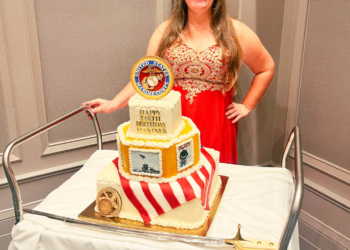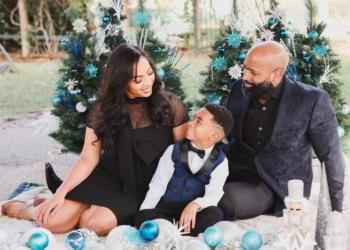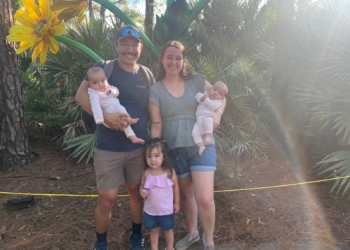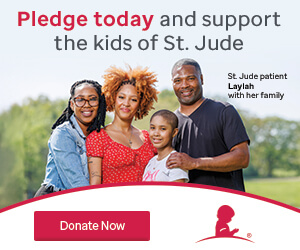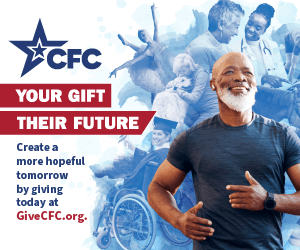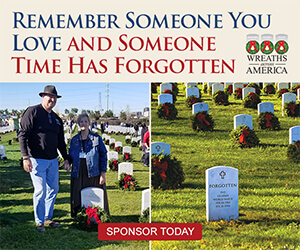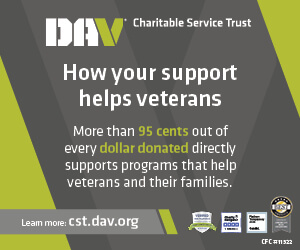Sybil Jones had no indication that anything was wrong – until her speech began to slur, her vision went black, voices became faint and her face smacked against a table.
“I’d been out all day,” Jones, a Navy spouse, said. “It was still COVID, but at that time the world was opening up. I had been out with my daughter … at a three-hour [riding] practice at the barn for her. There was literally nothing that made me think anything was wrong until they saw something wrong.”
But on April 17, 2021, during her husband’s farewell party, she had a stroke caused by carotid webs – a rare condition in the carotid artery.
“Those eyes and their speech is a telltale sign,” she said. “ … My talking all the time – I have the gift of gab – that is what saved my life.”
Jones, 43 at the time of her stroke, now shares her story publicly, bringing attention to the cause of her own cardiac event.
“You get full emotions. I don’t practice what I’m going to say … Sometimes I’m crying,” Jones said. “They’re just those raw emotions.”

The demographic of stroke is wide – ranging from babies to people in their 70s and beyond – and people can’t say that because they’re young or healthy, they might not be at risk, said Dr. Sarah Song, a neurologist at Rush University Medical Center.
“Without sounding alarmist, young people can have strokes too … Just to be aware and to talk about having medical conditions and taking medication for them, there’s no shame in that, right?” Song said. “You should know your numbers. Know what your blood pressure runs, if you have risks.”
Carotid webs are an “atypical” vascular disease that there isn’t a good way to diagnose, according to Song, who also sits on the American Heart Association’s Metro Chicago Board of Directors. But those with carotid web as their stroke cause trend younger – in their 20s, 30s and 40s.
Sometimes patients have a transient ischemic attack (TIA), which produces stroke-like symptoms but doesn’t scar the brain, according to Song.
Reflections as a stroke survivor
Jones said she didn’t know much about strokes until she had one. It was something she assumed just happened to older people.
“I would really say one thing that has stuck with me from that is don’t – especially within the military community – you’re out and people just assume, ‘Oh, the spouse is drunk.’ No, double check is she OK. Can she make that eye contact?” Jones said.
Time, Jones said, is of the essence. And telling the 911 operator about the possibility of a stroke so EMTs are prepared on arrival.
Similarly, Song said when symptoms appear it’s important to get to the hospital right away.
“There’s medication to treat stroke, meaning we can reverse the symptoms if you get to the hospital in time,” she said.
Treatments can be administered up to three- to four-and-a-half hours after symptom onset if patients qualify for the medication. For certain types of stroke, Song said, patients can receive treatment for up to 24 hours.
Jones was hospitalized for a week, where she started speech, physical and occupational therapy, before being released into outpatient care.
“I think one of the hardest parts was once I did get home, having 24-hour care. I had teenagers and they were going to the bathroom with me,” she said.
But she was hospitalized again for a procedure to address the carotid web that triggered her stroke. Jones said her family and her faith in God helped her through the recovery.
However, Jones said there are some “residuals, and the mental health aspect of it still haunts me a little bit to this day.”
“Something that just came up recently is the anger,” she said. “Understanding because I didn’t understand, ‘Why am I so angry?’ Just kind of working through the anger management piece of it. Really just releasing all of those emotions.”
Jones said she has met a few other spouses who have had strokes or know someone who has.
“Let’s really start talking about this more,” Jones said, “because again, at 43 you’re young, you’re not thinking you’re having a stroke at that age. I really want to just share – share about the signs to look for, and that recovery. That behind-the-scenes piece for someone who doesn’t have any visible sign of stroke.”
Read comments




















